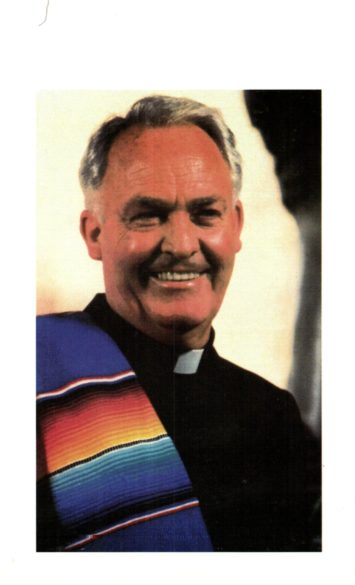
By Monsignor Michael Flannery
SALTILLO – The good work begun by Father Patrick Quinn continues south of the border in Mexico.
Bishop Joseph Brunini, adopted a mission in Saltillo, Mexico in response to an appeal from Pope Paul VI to all the bishops of the world to send priests to Latin America. The ratio of priests to congregants was one priest for every 10,000 people. The ideal is one priest per 1,000.
Father Patrick Quinn was chosen to be the first pastor and he was presented to Bishop Luis Guizar y Barragan for assignment and appointed as pastor of Perpetual Help Church, within the city of Saltillo July 1, 1969.
Prior to that date Father Quinn had resided at the Sanctuary of Our Lady of Guadalupe, in Saltillo for six months while learning Spanish. At the time of his appointment, the population of Saltillo was 200,000. The city has quadrupled in size and is now over 800,000 population.
Initially, Perpetual Help parish had 33 mountain villages and three colonies within the city of Saltillo, giving a total population of 30,000. The people in the mountain villages had not had the services of a priest in over 10 years. Father Quinn was joined by Father Patrick Murray to serve the parish in July 1969.
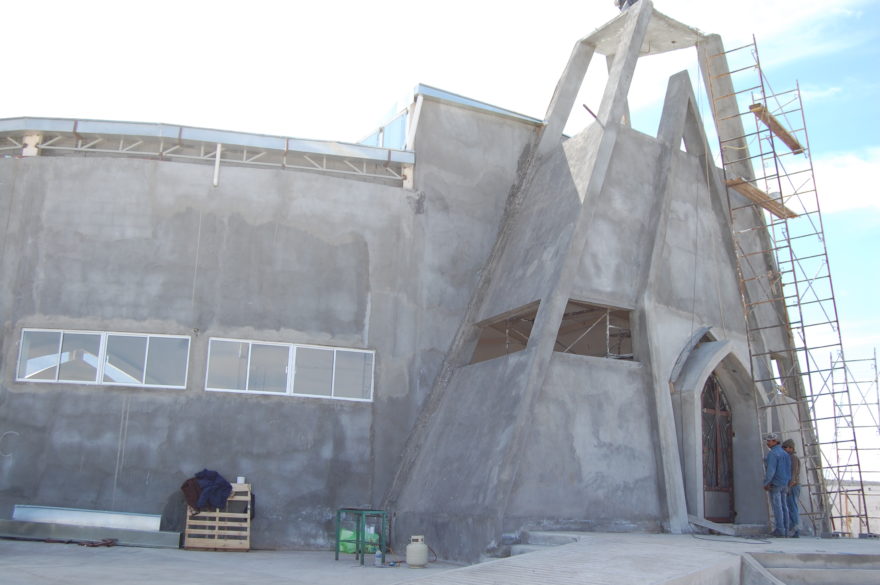
A rectory was built adjacent to the church to accommodate the priests. Every village or rancho would now have the services of a priest at least once a month. Perpetual Help Church would have two daily Masses and the three colonies would have Mass every Sunday.
The main thrust of the ministry of the priests would be to the mountain villages. The city of Saltillo is 5,000 above sea level and the mountain villages range from 7,000 to 9,000 feet.
At first, Fathers Quinn and Murray celebrated Mass in the open air. Then an effort was made to build a place of worship in every rancho or village. A wooden altar was provided. Benches were used instead of pews. These chapels served as community centers, funeral parlors and places where a wedding could be celebrated and village meetings could be held.
Not with-standing the fact, that these people did not have the services of a priest, the faith was still very strong and mostly centered in the home. Every home had a sacred space where there was at least a picture of the Sacred Heart or Our Lady of Guadalupe. The people were elated with the services provided by the priests and responded graciously to them. The priests now had the trust of the people.
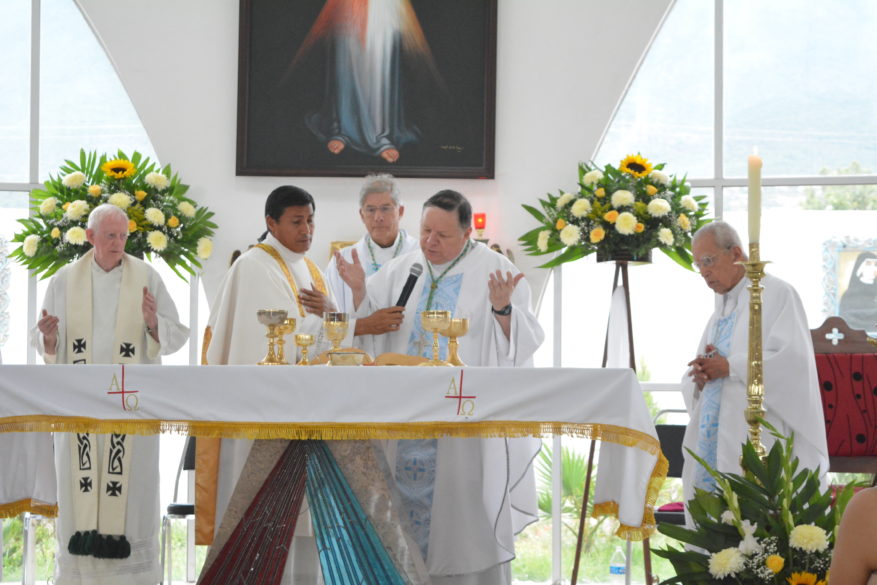
Within two years of establishing the mission, the Saltillo Summer program was born, where the youth of Mississippi were invited to come and spend a week at the mission. Over time more than 20,000 of the youth of Mississippi participated in the Saltillo Summer program.
Accommodations were added at Perpetual Help which could house 100 people. For the most part, these facilities were in a dormitory-style. For all the participants who joined the Saltillo Summer program, it was a game-changer in their young lives. For the first time in their lives, they came face to face with real poverty and met people who did not know where the next meal was coming from. When they came back to Mississippi, they appreciated the basic amenities of life, such as: when you turned a switch, a light came on, when you turned faucet water came out. On their return to Mississippi, some of the youth chose professions such as medicine, social ministry, all of which were ministries to other people.
A great program at the mission was called “Bean Monday.” On the first Monday of every month, two kilos of beans were distributed to every family that came to Perpetual Help for assistance.
Word spread throughout the whole of Saltillo. Two kilos of beans would feed a family of six for a week. On any given year 100 tons of beans would be distributed to the poor.
The villages ranged from a 45-minute drive from Saltillo to a six-hour drive to the most remote villages.
Over time, the number of the villages grew to 62 and the number of churches within the city of Saltillo being served grew to ten.
Another program at the mission was the building of cinder block homes for the poor. Again, Father Quinn built 2,340 homes for the poor. The building of these homes was a cooperative venture. The petitioner had to own the land on which the home would be constructed. Father Quinn provided the raw material such as cement and sand for the footings and the cinder blocks for the walls. The owner had to provide the labor to build. After the basic structure was near completion and after an inspection, a steel door and windows were provided as well as material for the roof. These homes certainly made a difference in the lives of the people and were greatly appreciated.
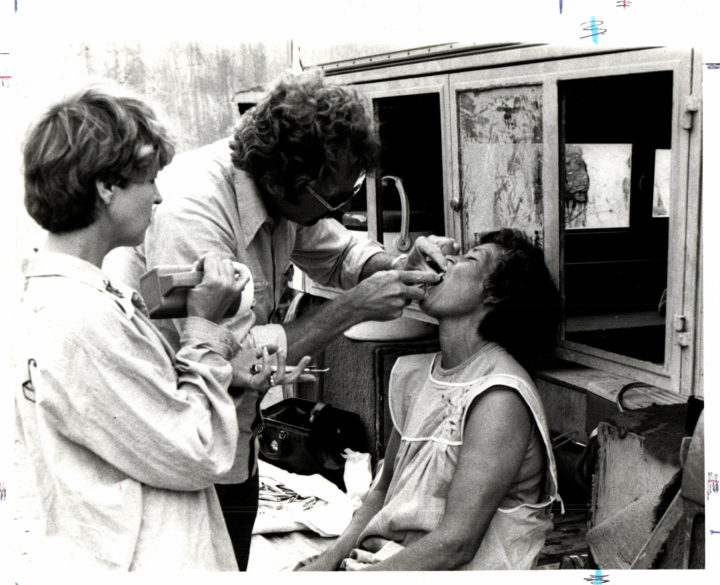
The mission was blessed from the beginning by the generosity of the good people of Mississippi who not only supported the mission financially but also with their time. When medical doctors, nurses and dentists came to visit the mission, they would also often serve the poor of the mountain villages.
Usually, the priest was the interpreter and translated the symptoms which the patient indicated to the doctor, nurse or dentist. Little or no medical help was provided to the rancheros except for the visits of the medical doctors, dentists and nurses from Mississippi.
For over 30 years, Dr. Kuluz, a pediatrician from Pascagoula, went to the mission and donated his services for at least a week every year. He convinced his colleagues to join him and not only to donate their time but also, their sample medicines to the mission. Many a life was saved through the medical services provided.
There is no question that Father Patrick Quinn was the inspiration behind the mission and its success. He gave his life to the mission and was called to the Lord on Jan. 9, 1997, after suffering a heart attack. He served the mission for 28 years and is buried in an alcove of Perpetual Help Church.
His death marked a time of transition and change at the mission. Bishop William Houck of Jackson, asked Bishop Francisco Villalobos (Bishop of Saltillo) for three months to find a priest who would be familiar with Mexican culture and speak Spanish to replace Father Quinn. Msgr. Michael Thornton from the Diocese of Biloxi was chosen for the task.
Msgr. Thornton was first assigned to Saltillo in Sept. 1973 and served the mission until Aug. 1977. He was familiar with the mission, spoke fluent Spanish and had acquired a knowledge of Mexican culture and customs.
In 1998, Bishop Villalobos created San Miguel as a parish and named Msgr. Thornton as pastor. This new location is still within the city of Saltillo and surrounded by a beautiful colony named Vista Hermosa (The Beautiful View).
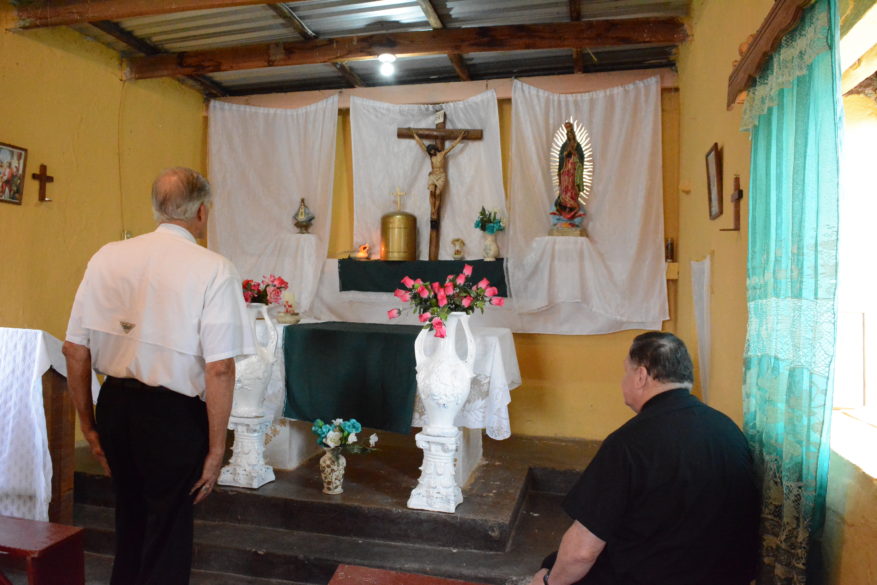
Presently at San Miguel there are two priests: Father David Martínez Rubio, administrator, Father Evelio Casarubias Rodríguez, his assistant.
The present number of villages being served by San Miguel is 24. The number of churches within the city of Saltillo, served by the priests of San Miguel number eight. Every mountain village is served at least once a month and every church within the city at least weekly. In total, the priests are covering 32 different locations.
